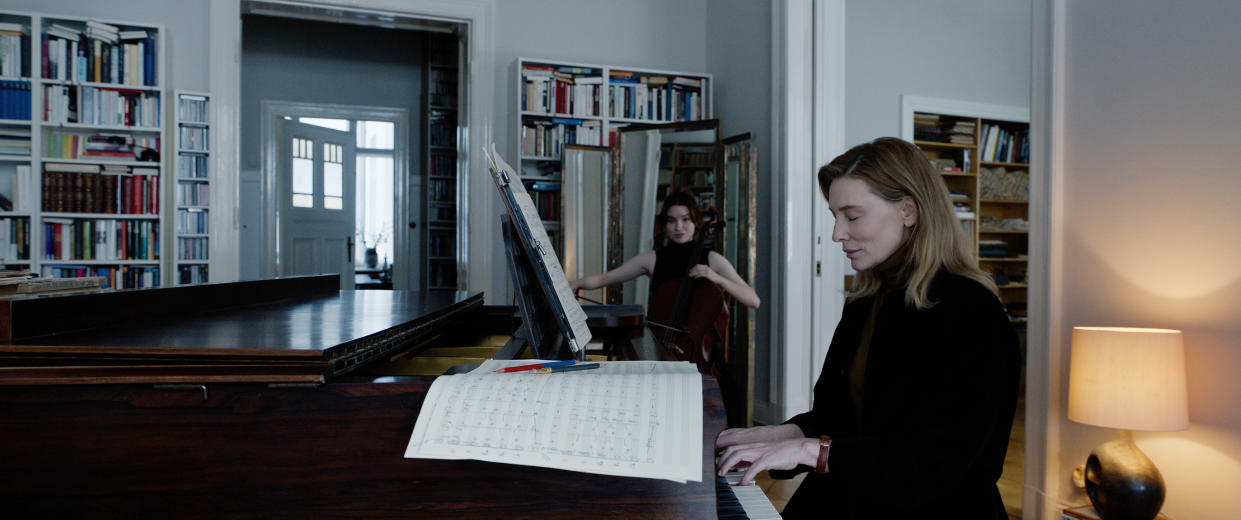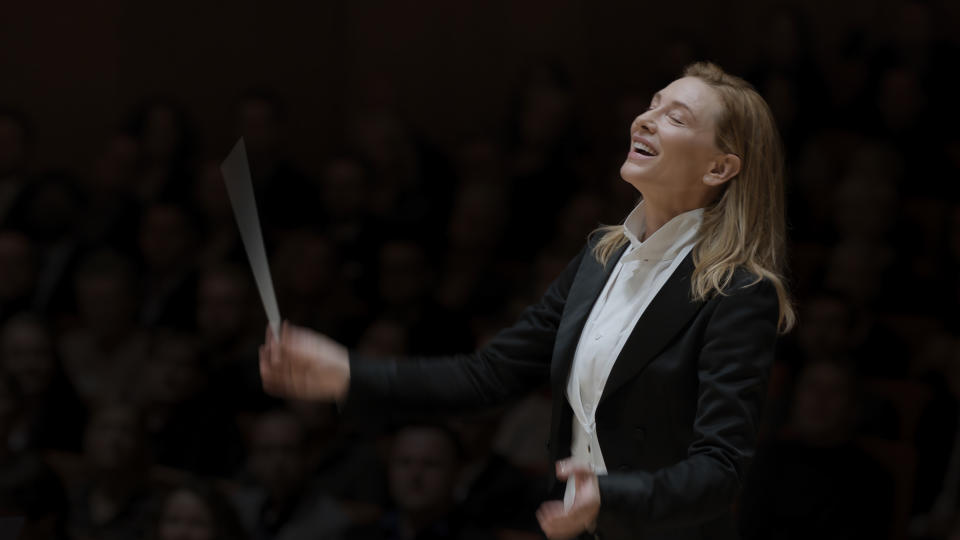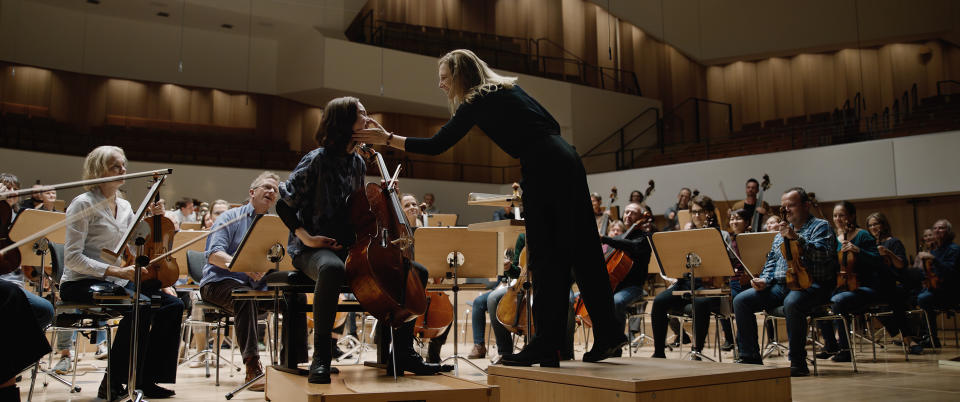Making and Unmaking the Upscale, Minimalist World of ‘TÁR’

Genius conductor. Illustrious composer. Author. Professor. The magnificent (and very much fictional) Lydia Tár — the tricky virtuoso at the center of Todd Field’s masterful psychodrama “TÁR” — is all of those things and then some, dwelling in the wealthy and privileged corners of the international classical music community with impeccable style, both understated and powerful.
Played by a haunting Cate Blanchett, Tár inhabits an exclusive intersection of art, expertise, and intellectualism that is rooted in Berlin but spans continents, one that the film’s renowned costume designer Bina Daigeler and production designer Marco Bittner Rosser bring to life with upscale finesse, through the glories and fault lines of the problematic master’s legacy as she falls from grace.
More from IndieWire
'Wakanda Forever' Production Designer Hannah Beachler Dives Into the History of Talokan
Noémie Merlant Channeled Her 'Huge Admiration' for Cate Blanchett Into 'TÁR' Performance
To Daigeler, minimalism was one of the vital keywords of Tár’s wardrobe, a quality she put front and center, contrasting some of the dazzlingly maximalist work she’s made her name with, like the Oscar-nominated costumes of “Mulan” (2020) and the vibrant films of Pedro Almodóvar. “I did some other minimalist movies. ‘Only Lovers Left Alive’ was good training for it,” she said, alluding to the Jim Jaramusch vampire comedy that also featured production design by Rosser. Still, it was a huge challenge for the designer to scrub her work down to the basics, making sure that Blanchett’s garments never flaunted themselves too blatantly. “It’s always about the feelings, the character and the story. And then you need to eliminate,” she explained.
On the whole, Daigeler approached the contemporary “TÁR” with the same investigative discipline that would have been required by a period movie, pulling inspiration from various different avenues—the name Tár, rearranged as “rat” and “art,” graffiti from the Berlin wall, a painting by Edvard Munch, and her extensive research of orchestra conductors male and female, from Marin Alsop to Herbert von Karajan. Once she compiled a thorough mood-board that looked like “rough and dark Berlin graffiti,” she started subtracting. In that spirit, there were several costumes, such as a beautiful Dries van Noten suit that both she and Blanchett loved, that didn’t end up in the movie. “It’s actually good that they are not in the movie, because it made the rest essential,” she said.
Similarly, Rosser favored a minimalist and uncluttered look, concentrating especially on the character-defining facets of Tár’s domestic interiors, both imposing and sparse. “We were trying to find the best way to find the domestic space that would portray her grandness and the scale of the role that she achieved,” he recalled. “But a classic domestic environment would have been a bit banal. So we ended up in this Brutalist, concrete architecture apartment.” That space proved to be the right choice quickly, with an effortless appearance that brought the important pieces into sharper focus, like the centrally staged grand piano.
To unstiffen the harsh edges of the Brutalist architecture, Rosser played with light fixtures as intimate and soft design elements. “Lights allowed us to bring warmth into the scenes. Even though we have a lot of cold surfaces, we end up in a warm atmosphere through the grand chandeliers that are integrated into the set.” He also maintained a close collaboration with Daigeler who frequently shared with Rosser how the fittings went, as well as what Blanchett and Field liked. “We would exchange a lot of information with each other in the process of tuning our two departments in the right level. I had to make sure that our colors and the levels of contrast corresponded.”
The result of that teamwork is generously reflected in the film through Tár’s classy home and closet. The former exhibits an eclectic mix of furniture and art, while the latter consists of various sharp, custom two-piece suits, a variety of shapes and premier brands such as the Parisian label Lemaire, Dries van Noten, and The Row. “Some furniture pieces were from China. There was a Ming vase, some 1930s stuff, and a lot of mid-century elements,” said Rosser. “A cultural genius like her would be interested in a very diverse selection and make a point of not referring to just one time, but pick the best pieces from all times and surround herself with them.”

Courtesy of Focus Features
Knowing that Blanchett needed space around her arms for the conducting scenes, Daigeler designed the tailcoat she wears onstage with a certain aesthetic and special pieces that allowed movement. She also had to make sure that the jacket itself didn’t move around too much, so she secured it with some elastic around the waist. Some of these insights came from Blanchett’s conducting coach, Natalie Murray Beale. Others were more off-the-cuff. “There was one rehearsal where Cate was wearing her own high-waisted jeans. She said, ‘That feels really good. It gives me a lot of support in my core and I need that.’” The jeans for recreated in a different color for Blanchett to wear on screen.
Finding the ideal concert hall was just as crucial for the authenticity of Lydia’s professional world. Rosser was able to secure a magnificent vineyard-style space in Dresden to represent the home of Tár’s orchestra, Berlin Philharmonic. It was the right concert hall for the story, not only because of its beauty but also its rare seating structure that wraps the audience around the stage. “Visually, it was great. There are very few concert halls that have this layout where you have seating behind the stage. But getting the concert hall was quite an interesting process,” Rosser said, explaining how life imitated art during it. “We see certain moments in the movie when Lydia Tár is taking votes from the orchestra. That is actually a fact; the orchestra is a democratic body. We also had to present our project and 110 musicians took a vote whether they wanted to work with us or not. Todd went there personally, met with the orchestra and sold the project to them.”
The hall was designed in the 1960s, and recently refurbished by the prestigious German architecture company Gerkan, Marg and Partners. But while the rehearsal scenes were shot on location, spaces like administrative offices were either designed or found in other locations. Rosser always had a specific configuration of hallways, terraces, staircases and meeting rooms in mind with elements of 1950s and ’60s post-war architecture. “In Germany, cultural spaces that were built in mid-century after the war represent the rebirth of culture that was trying to reinvent itself. We were representing a certain period we wanted to relate to. The offices were designed and built. For the hallways, we used pieces of the public library building in Berlin. Then we also used the hallways of a conference center built in the ’60s by an American architect. They worked really well together in terms of their textures and colors.”

Courtesy of Focus Features
Both designers had to bring their own dexterity into embodying Tár’s decline once she shows her true colors as a destructive and abusive power figure. “For me, there were three parts in her wardrobe,” Daigeler said. “When she was on top; so sure that she will finally conduct Mahler’s Fifth. When everything slowly falls apart. And when she has to really downsize and reinvent herself. And she can’t reinvent herself alone as she depends on the jobs of other people. She’s not a painter who can paint just by herself. She has to be humble and accept that the rest of the world somehow knows exactly what she is doing.” So Daigeler followed that trajectory, evolving Tár’s assured look in segments towards something more modest, and at times, even disheveled.
Rosser also had to consider Tár’s journey into the deep end. Conceptually, he zeroed in on a growing sense of claustrophobia, making sure that the curtains of the Brutalist apartment remained shut and the concert hall felt fenced in. “The only window we see is in the scene where she gets fired. We were keeping her in an enclosed world that doesn’t really relate to the outside. She just relates to herself really.” Changes were also made to Tár’s town studio in Berlin, where the maestro sometimes goes to compose. “It was important to Todd to create a feeling of an authentic space that seemed like it’s all in one space. And it totally gets changed after she gets fired. There are elements of that in a scene that we shot but it didn’t end up in the movie: she was drawing all over the walls, the furniture gets changed around and the space changes. It wasn’t needed in the movie, but in terms of conceiving the character, it was super helpful for all of us to go through that process.”
Meanwhile, nearly the opposite experience happened to Daigeler, with a costume-centric sequence that follows the making of an expensive, bespoke suit for Tár, “That was a two-liner in the script,” Daigeler said. “I never worried about it at first. But one day I had to find out what Todd wanted. And then I understood we are making a short movie about how to make a jacket and a suit. I said, ‘But that is not on your schedule. Who will cut it? Who will make it? We need a tailor. And so we started to plan all this.” The exquisite intro ended up being a two-day second unit shoot. Daigeler wanted to use corduroy, while Field insisted on wool. “Of course, he’s the director. He was the winner. And so we choose this thick cashmere wool, really beautiful. We choose the right fabric for the shirt. It was all tailored to her measurements. I wondered if it would end up in the movie. And then there it was. I was so happy because it tells so much about the film’s tempo and describes so much about the world of Todd Field, of Lydia Tár.”
Best of IndieWire
New Movies: Release Calendar for November 23, Plus Where to Watch the Latest Films
51 Directors' Favorite Horror Movies: Bong Joon Ho, Quentin Tarantino, Guillermo del Toro, and More
Sign up for Indiewire's Newsletter. For the latest news, follow us on Facebook, Twitter, and Instagram.

 Yahoo News
Yahoo News 
